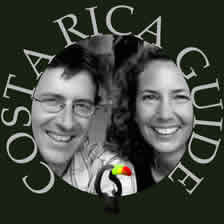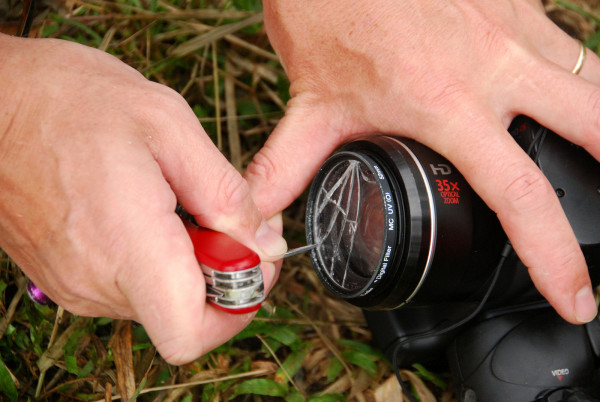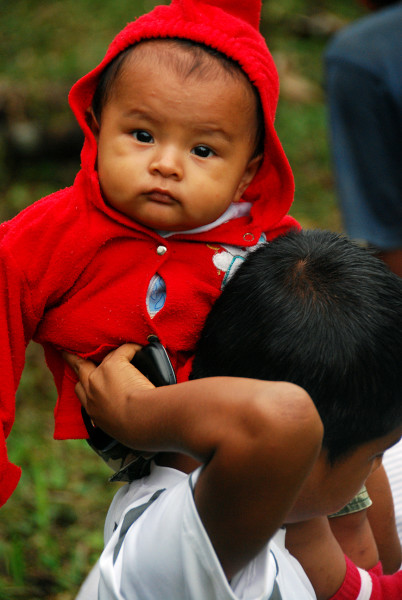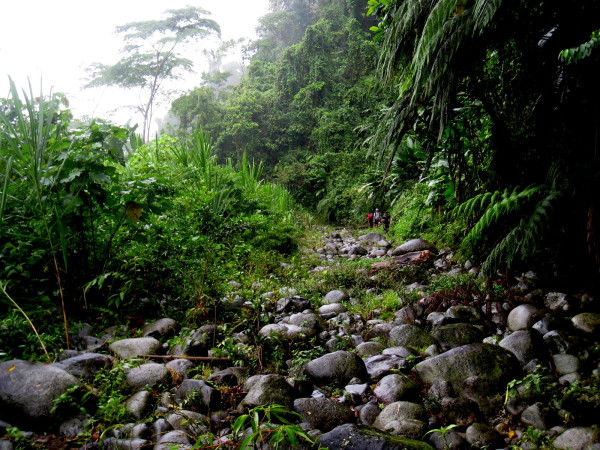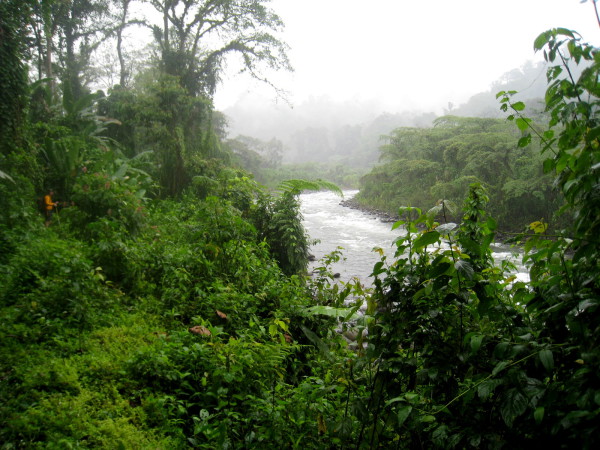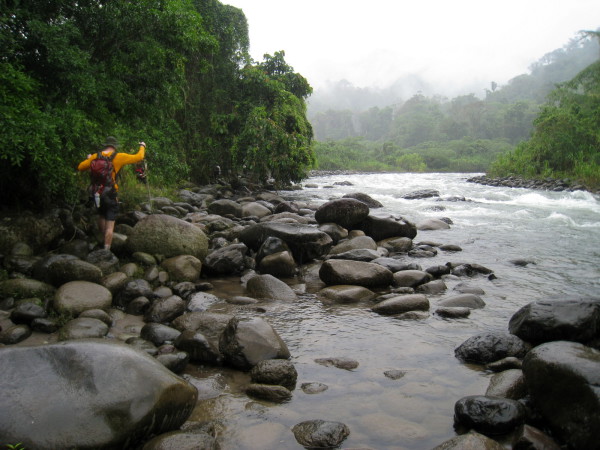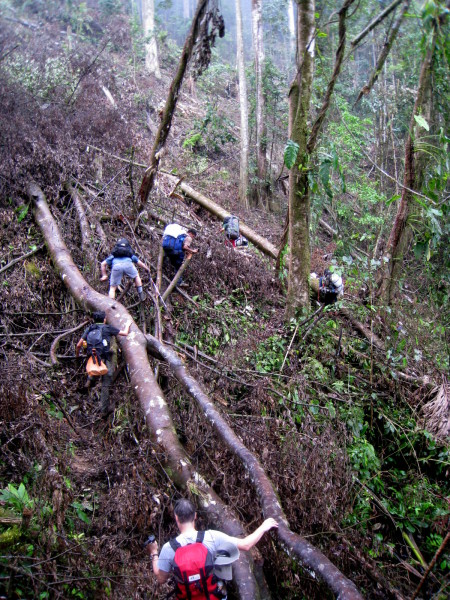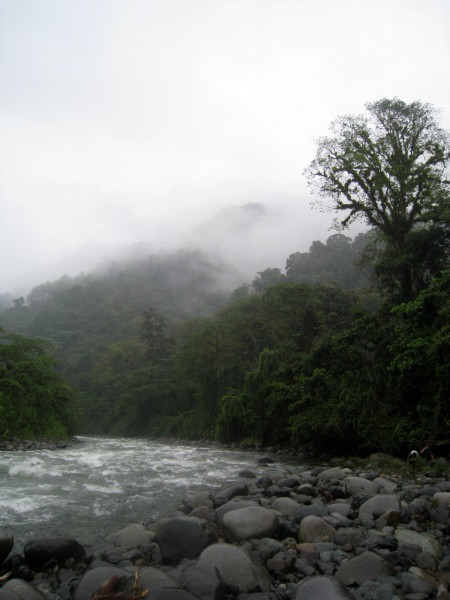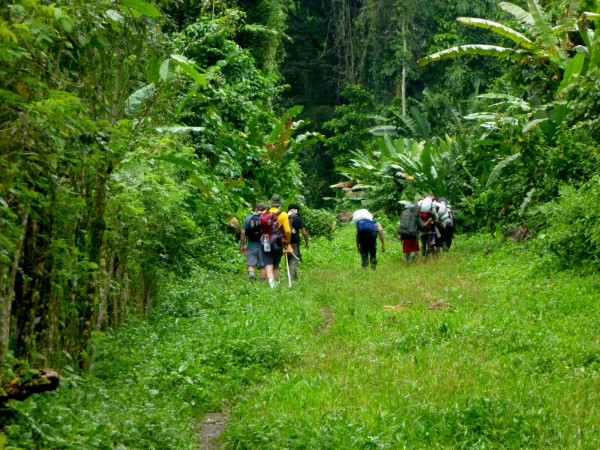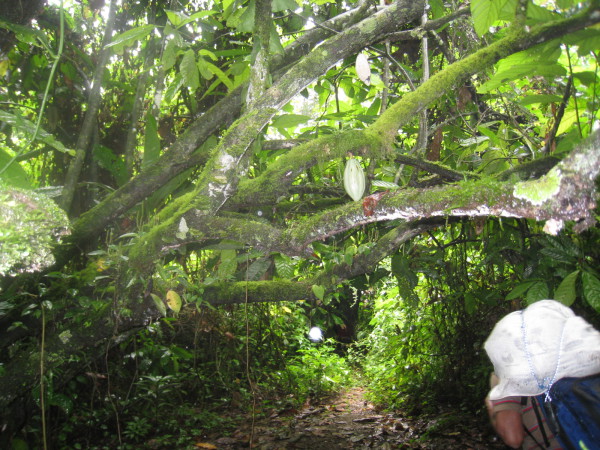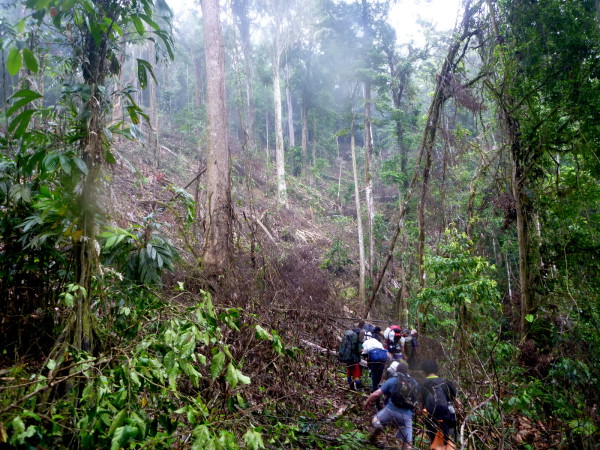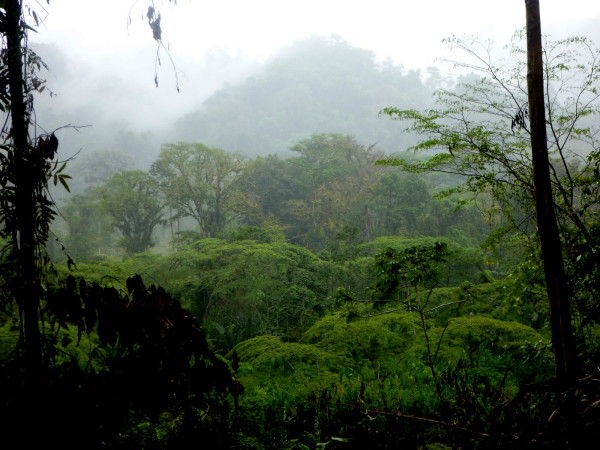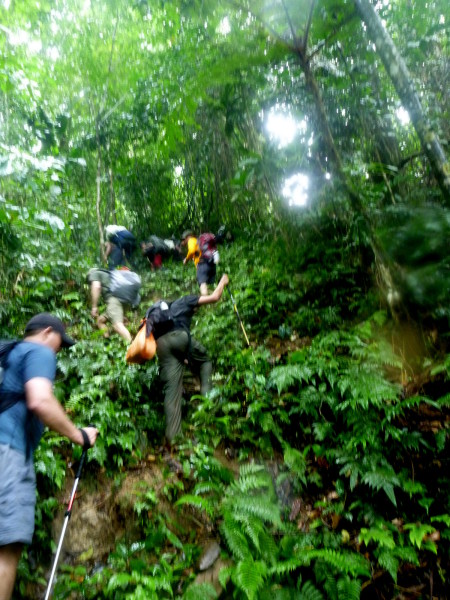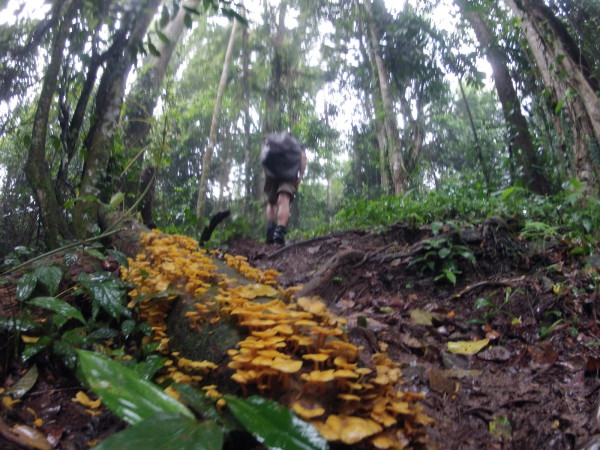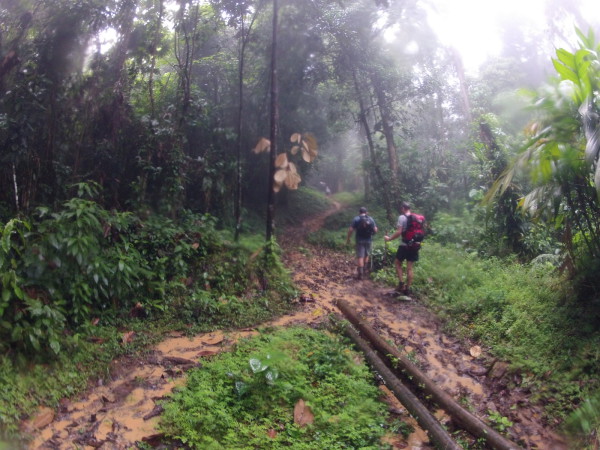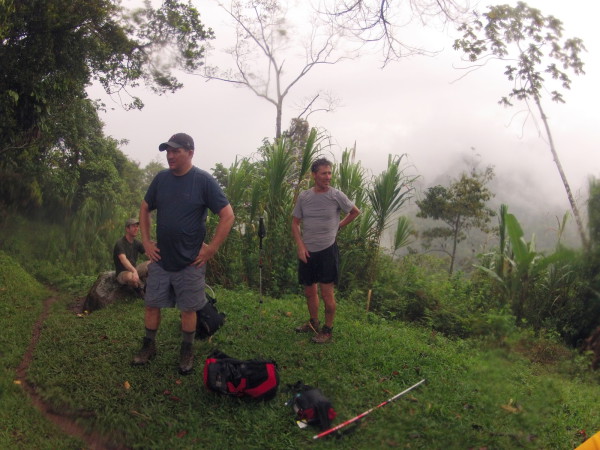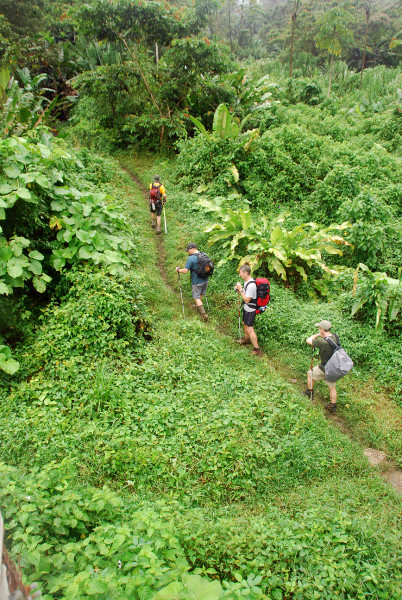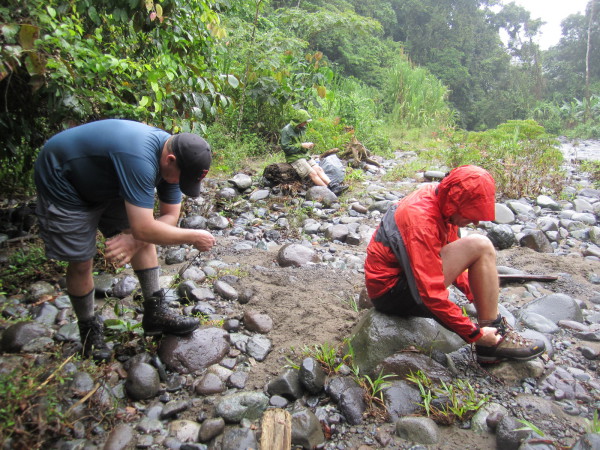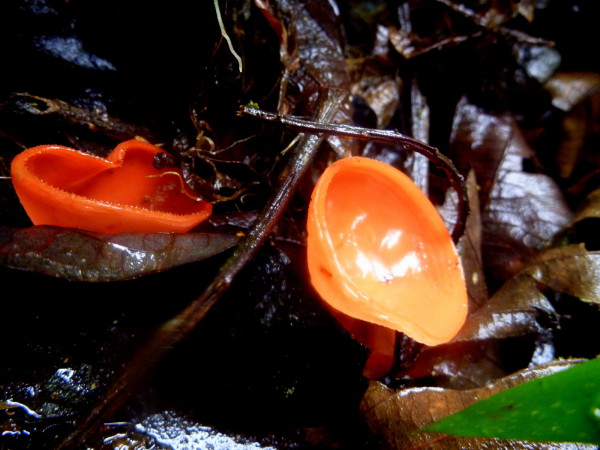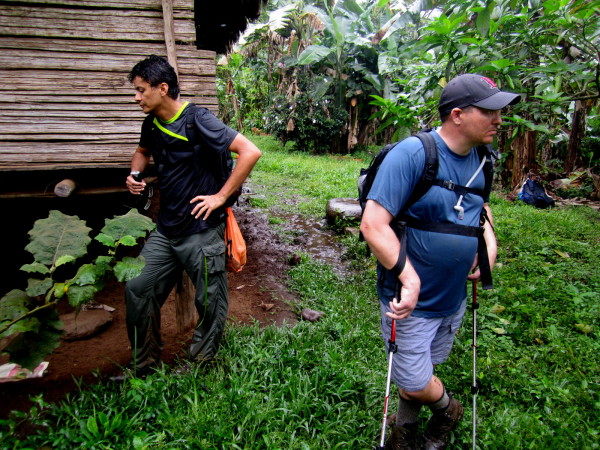Day 2 – March 18
Hiking – 13.7 km (7.8 miles), 529 meters (1,670 ft) elevation gain.
We followed the south bank of the Río Coén through the wide relatively flat Valle de Talamanca for most of the morning.
Packing Up and Heading Out

Our packs were smaller and lighter than the porters. It seemed like cheating and I’d never had anyone carry stuff for me before but the outfitter explained that it was sort of required. The land we were crossing to reach La Amistad is an indigenous reserve owned and administered by the residents. Although there were no fees or permits required to hike there it was expected that you’d hire one porter per trekker to contribute to the local economy.
Besides, I’m over the hill now and headed down fast.
The top section of my pack is a dry bag and I typically carried my sleeping bag, dry warm clothes, first aid kit, toiletries, contacts, glasses, lunches, and a water filter (about 10 kilos or 22 lbs). The bottom half is a belt pack where I kept things I wanted handy like a gortex, snacks, two or three liters of water or Gatorade, two cameras and the GPS.

My porter carried the tent, Thermarest, sandals, dinners, some snacks and lunches, plus kitchen supplies – about 16 kilos or 35 lbs at the beginning and down to about 10 kilos at the end after we’d eaten the food – PLUS his own food, a tarp and change of clothes that weighed another 5 kilos or so.
Porter Number 6
We brought food for eight days even though we were planning to resupply when we reached the road at Ujarras the evening of day 7. We also brought tons of powerbars and other snacks in case we got stuck somewhere for a couple of extra days.

When we first divide out the piles for the porters and they added their own supplies their packs were around 60 lbs. When I was a kid their age I carried an 70 pound pack a few hundred miles on outward bound in the Colorado Rockies so I knew it could be done but it seemed like a lot to ask.
We asked about an extra and the head porter told us he’d been fighting applicants off for weeks. Apparently we not only paid quite well but none of them had ever been to the Pacific and we’re excited for the chance. So we brought on porter number 6.
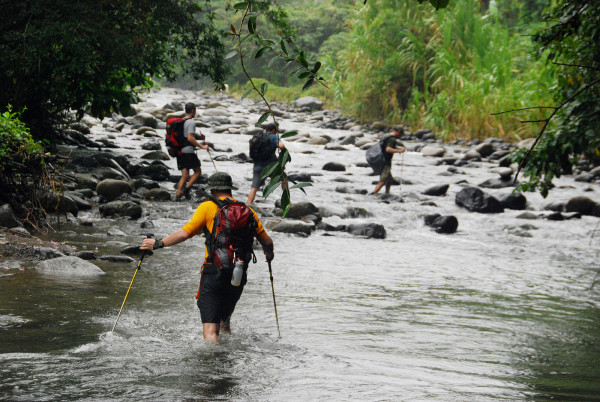
He sort of ended up with a crappy deal because his pile included all the stuff we’d considered leaving and it was all heavy. While the others all had lightweight thermarests and even relatively light tents and hammocks he was stuck with cans of chicken and bags of dried apricots.
He didn’t care. He still smiling when we hit the trail, smiled the whole way through and by the end his pack was literally empty because we’d eaten everything in it.
Afterwards when we knew just how difficult their task was we gave them all huge tips (I think it was about 100% of their fee, but Justin did the math and distributed the propinas).
The BriBri Indigenous Path – Coroma to Kichuguecha

Coroma is the last place you can reach in a motor boat and all travel beyond that point in BriBri is on foot or horseback.
There are a few hundred people that live along the trail. Small plots of bananas, coco and other crops provide a little income and kitchen gardens, chickens, pigs and fish from the river provide most of their sustenance. If you’ve ever dreamed of giving it all up and living the simple life you could probably get started here for a couple hundred bucks.
As we headed west homesteads quickly became quite sparse.
Tents Under Thatch

Camp on the second night in Kichuguecha was downright luxurious inside the community house. It drizzled and rained most of the time, but we happily bounced around on the springy split bamboo floor under a thatched roof.
We knew it was nice but the next few days would make it abundantly clear exactly how nice it was to have a dry kitchen. Dinner was linguini with artichokes and sun dried tomatoes, Tuscan Parmesan potatoes, and sweet coconut rice with cloves and allspice for desert.
Go to Another Day
Caribbean – 0 – 1 – today – 3 – 4 – 5 – 6 – 7 – 8 – 9 – 10 – Pacific
Photo Gallery Day 2 – Coroma to Kichuguecha
Each of the images below is linked to a larger version with a detailed description
Go to Another Day
Caribbean – 0 – 1 – today – 3 – 4 – 5 – 6 – 7 – 8 – 9 – 10 – Pacific
